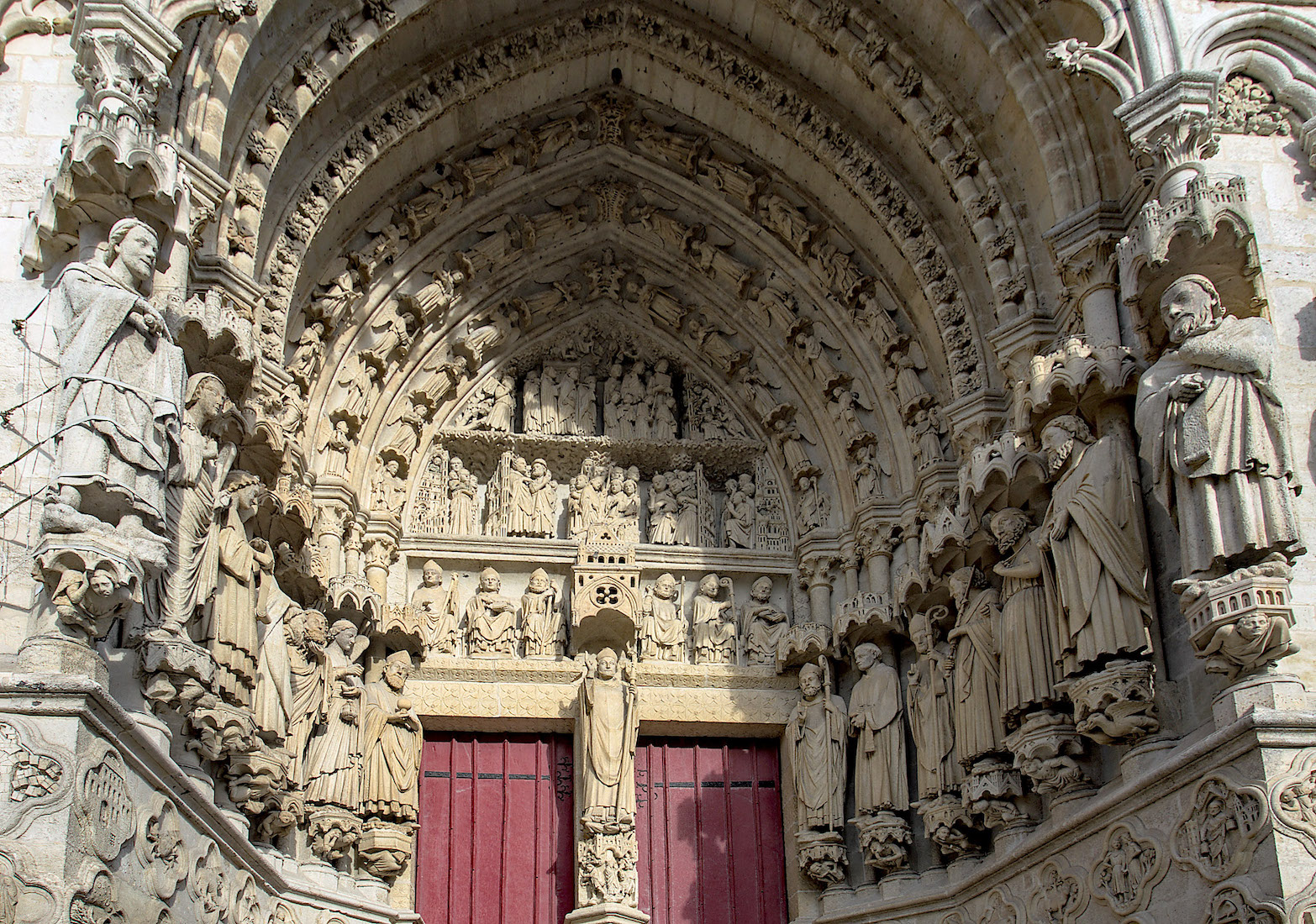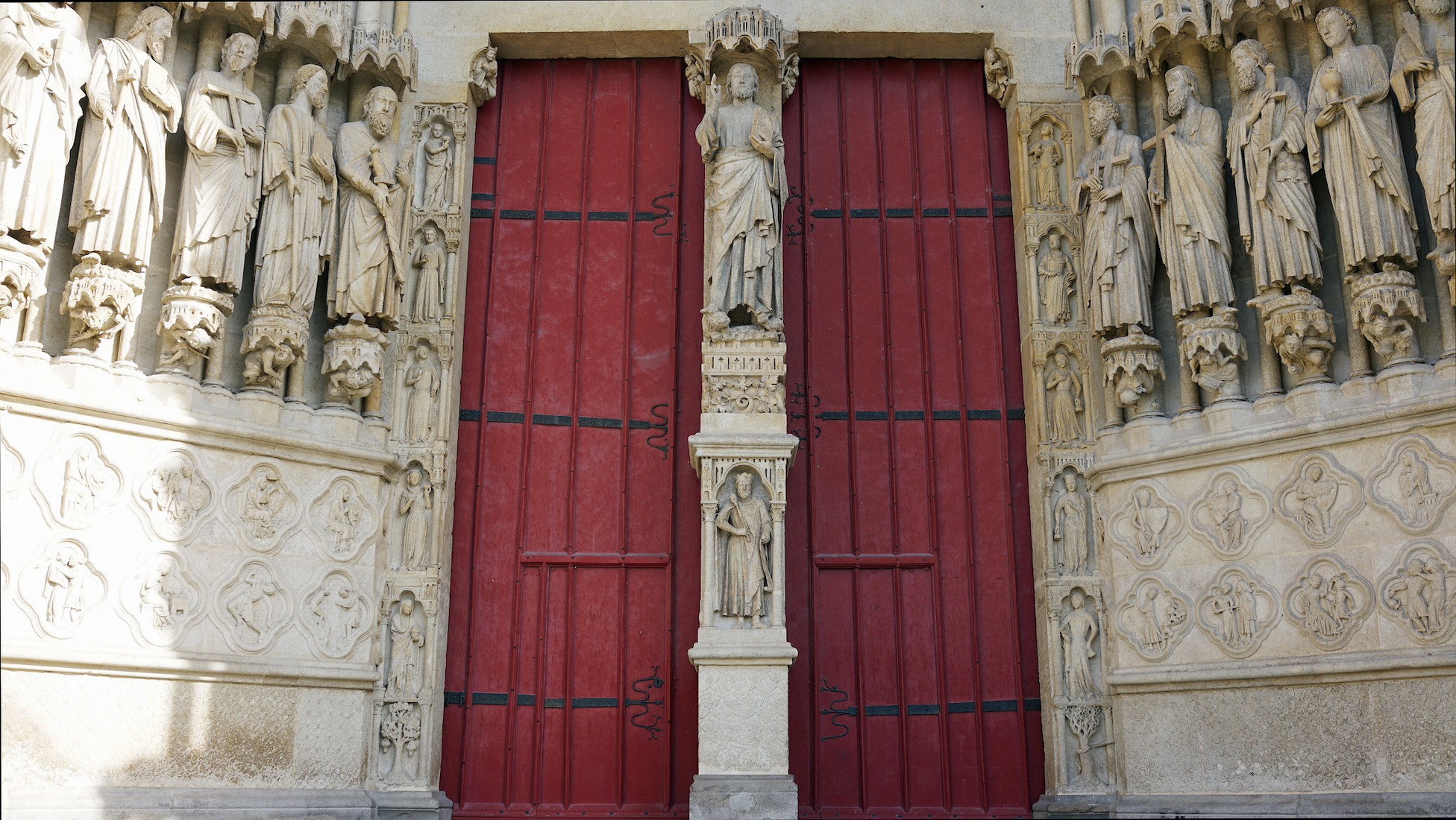WEST P:ORTALS DETAIL
2. LEFT DOOR: PORTAL OF ST FIRMIN CD

3. LEFT DOOR: ST FIRMIN AND TYMPANUM AMT
. LEFT DOOR: TYMPANUM SZ
5. CENTRAL DOOR SZ
The central doorway, also called the ‘Portal of the Last Judgement’, consists of many sculptures dedicated to the ‘Beau Dieu’. Between the two doors stands a statue of Christ the Saviour, also known as the ‘Beau-Dieu d'Amiens’. This statue is considered to be one of the most remarkable in the site. It represents Christ teaching, holding a closed book in his left hand and with his right hand he gives blessings. Rumour has it that the sculptor did not find the inspiration to make the statue and that God appeared to him in the middle of the night. The sculptor was found dead the next day with this statue at his side. On the Christ’s sides stand the large statues of the twelve apostles surrounded by the four main prophets.
6. CENTRAL DOOR: TYMPANUM SZ
The central tympanum is decorated with a representation of the scene of the Last Judgment. According to Christian traditions, this scene depicts the moments during which the dead are raised and then judged by Christ. On the lower part of the tympanum, the resurrected come out of their tombs before Archangel St. Michael weighs their souls. In the middle, the sinners are separated from the good Christians and, completely naked and driven by demons, walk toward the mouth of a monster, Leviathan, which symbolizes Hell. The good Christians, on the other hand, walk to the right to Heaven. On the upper part, Christ on his throne is surrounded by the Virgin and Saint John, who kneel for the salvation of their souls.
7. CENTRAL DOOR: SUFFERING OF THE DAMNED AMT
8. RIGHT DOOR: FIGURES AMT
The sculptures on the right-hand doorway are dedicated to the ‘Mère Dieu’ or Virgin Mother. On this portal stands a series of six characters from the Old Testament who are none other than the ancestors of the Virgin. The death and assumption of the Virgin are also represented, as is her Coronation in Paradise.
9. RIGHT DOOR: MADONNA AND CHILD SZ
10. RIGHT DOOR TYMPANUM SZ
11. ZODIAC QUATREFOILS AMT
On the lower part of the portals stands a series of medallions which are carved in the stone. Those shown above feature an agrarian calendar that establishes a correspondence between the zodiac signs and the works of the months. This is also called the Picard calendar or the Amiens zodiac. The characters represented work in the countryside and wear different clothes according to the seasons.










